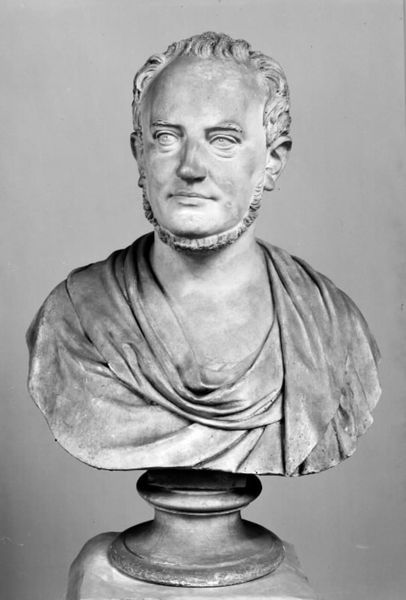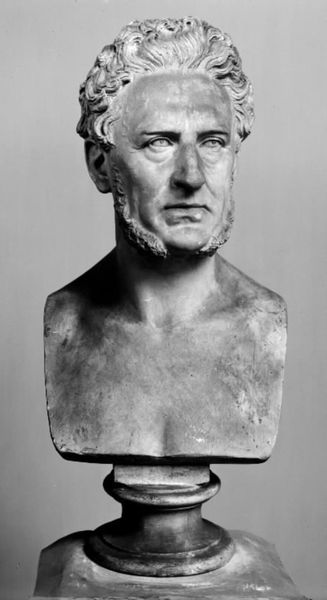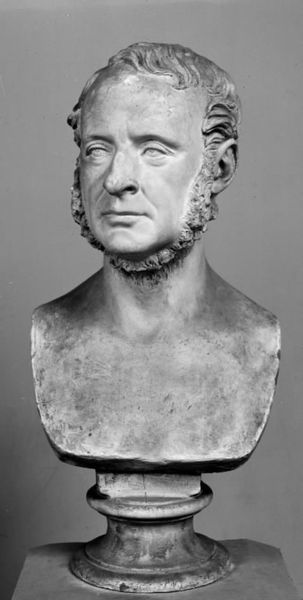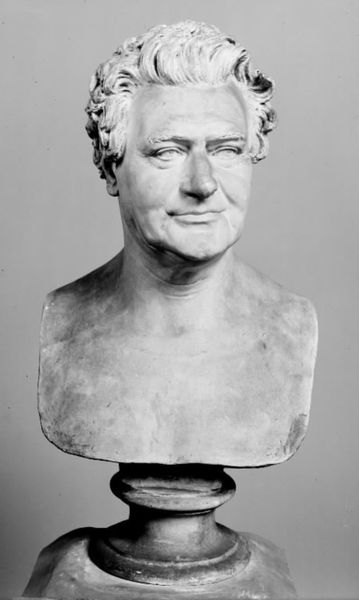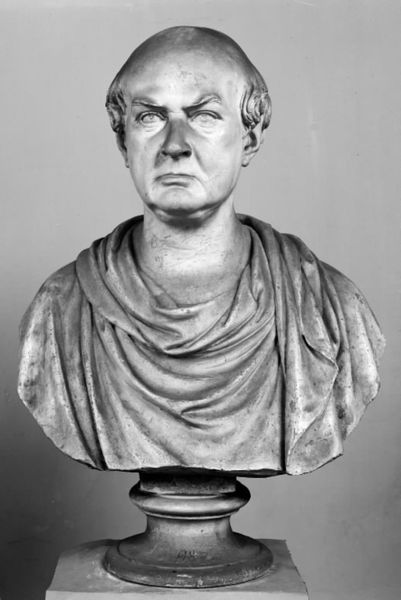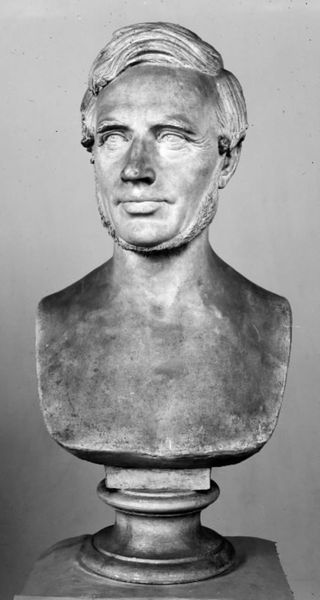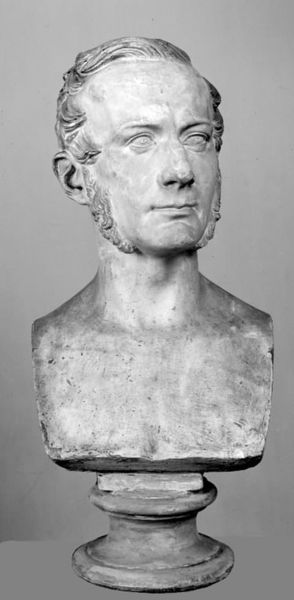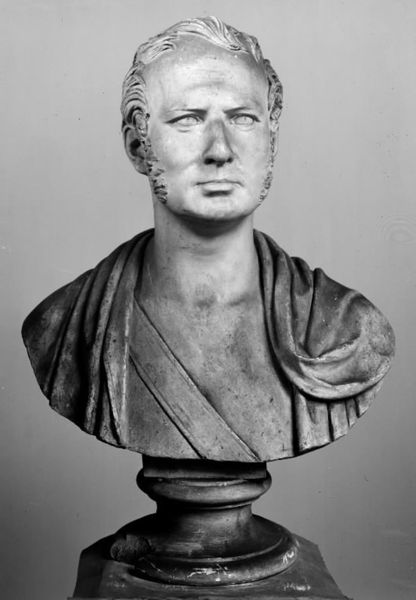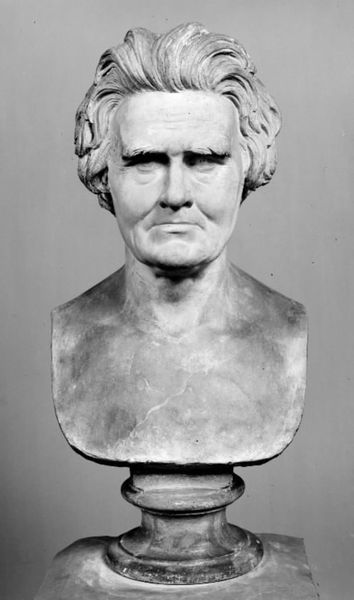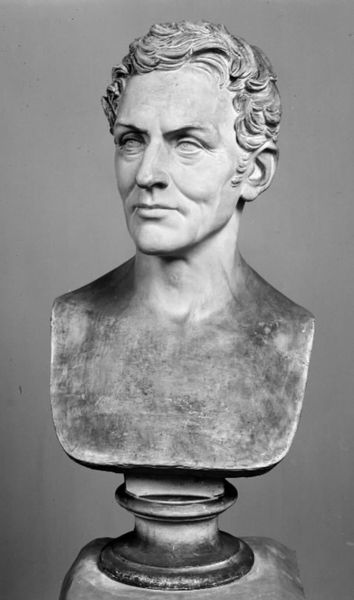
sculpture, marble
#
portrait
#
neoclacissism
#
sculpture
#
classical-realism
#
figuration
#
form
#
sculpture
#
marble
Dimensions: 66.7 cm (height) (Netto)
Editor: This marble sculpture, "Politikeren Orla Lehmann," created in 1856 by H.W. Bissen, is powerfully stoic. The detail in his hair is remarkable! What stands out to you most about this piece? Curator: The context is key. This bust commemorates Orla Lehmann, a pivotal figure in Denmark's move towards constitutional democracy. Museums, like SMK where it resides, played a huge role in solidifying these national narratives in the 19th century. It’s interesting how neoclassical ideals were used to portray leaders of liberal movements. What do you think about that choice? Editor: That’s fascinating! I suppose using classicism lends the subject a certain timeless importance. Did the public have a strong reaction to it at the time? Curator: Absolutely. Remember that the sculpture isn’t just a likeness; it's a statement about civic virtue and leadership. The public consumption of this kind of sculpture reinforced evolving political ideals within Danish society. Consider how public monuments still function in similar ways today. What do you make of the stoicism that you mentioned earlier? Editor: I think it reinforces the idea of a strong, unwavering leader… but it could also be read as a bit cold or distant. It makes you wonder about the artist's, and the institution's, intent in presenting him this way. Curator: Exactly. And that tension is part of what makes the artwork compelling. It reflects the complex relationship between power, representation, and public perception. It's all a social construct. Editor: This makes me look at all statues differently! I didn't think about museums trying to establish those ideas of nationhood. Thanks for your insights! Curator: My pleasure. It's all about understanding the art in relation to its time and place.
Comments
No comments
Be the first to comment and join the conversation on the ultimate creative platform.
